Ever scroll through a fashion magazine and wonder how a model makes a simple stand look like a painting? It’s not luck. It’s not just being tall or thin. It’s the quiet, calculated magic of posing - where every muscle, angle, and breath becomes part of the story.
Posing Isn’t About Looking Pretty - It’s About Communicating
Most beginners think posing means striking a ‘beautiful’ pose. That’s a myth. Real posing is about communication. A model isn’t just showing off clothes - they’re selling a mood, a feeling, a lifestyle. A relaxed shoulder tilt says ‘effortless confidence.’ A sharp chin angle says ‘power.’ A slight turn of the hips says ‘movement.’
Think of your body like a camera lens. You don’t point the lens randomly - you angle it to capture light, focus attention, and create depth. Same with your body. The way you position your arms, where you place your weight, even how you breathe - all of it guides the viewer’s eye.
Take a simple standing pose. Stand straight? Boring. Shift your weight to one leg? Now there’s tension. Slightly bend the knee? Now there’s life. Tilt your pelvis forward just a hair? Suddenly, your waist looks longer, your posture looks stronger. These aren’t tricks - they’re physics.
The Big Three: Angles, Lines, and Balance
Every great pose follows three rules. Master these, and you’ll never feel lost in front of the camera again.
- Angles - Never face the camera head-on unless you’re going for a direct, confrontational look. Turn your shoulders 45 degrees. Then turn your head back toward the lens. Now you’ve created dimension. Your body looks slimmer. Your face gets better lighting. Your collarbones pop.
- Lines - Your body should create clean, flowing lines. Avoid stiff, broken shapes. Keep elbows slightly bent. Don’t let your arms hang straight down - that makes you look like a mannequin. Let your fingers curve naturally. Even your toes matter. Pointed toes elongate the leg. Relaxed toes look casual. Tense toes? That’s tension you don’t need.
- Balance - You can’t look natural if you’re wobbling. Find your center. If you’re on one leg, shift your hip slightly over that foot. If you’re sitting, don’t slump. Sit on your sit bones - the two hard bumps you feel when you press down on a chair. That’s your anchor.
These aren’t just tips. They’re the grammar of posing. Without them, even the most expensive outfit looks flat.
Common Posing Mistakes (And How to Fix Them)
Even experienced models slip up. Here are the top five mistakes - and how to fix them before the shutter clicks.
- Arms like sticks - If your arms look like they’re glued to your sides, you’re dead in the water. Bend your elbows. Let one hand rest lightly on your hip. Let the other float just above your thigh. Create space. Your arms should look like they belong to you, not a mannequin.
- Dead eyes - A great pose dies without expression. Don’t stare blankly. Think of the mood. Is it mysterious? Look slightly away, then soften your gaze. Is it bold? Hold eye contact like you’re daring the camera. Your eyes are the punctuation mark of your pose.
- Flat feet - Standing flat on both feet makes you look heavy. Put your weight on the ball of one foot. Let the other heel lift just slightly. You’ll look taller, lighter, more dynamic.
- Too much tension - Clenched jaw? Tight shoulders? You look stressed, not stylish. Breathe. Roll your shoulders back once. Let your hands go soft. If your face feels tight, imagine you’re smiling with your eyes, not your mouth.
- Copying Instagram - That ‘perfect’ pose you saw on a model’s feed? It was shot from 20 angles. The one that made it wasn’t the most natural - it was the most edited. Don’t chase trends. Learn the rules first. Then break them on your terms.

Posing for Different Styles - One Size Doesn’t Fit All
Not all modeling is the same. Your pose changes depending on what you’re selling.
Fashion editorial - Think sculptural. Think movement. Lean forward with one arm extended like you’re reaching for something just out of frame. Twist your torso. Let your hair fall. This isn’t about looking pretty - it’s about creating a moment.
Commercial advertising - Here, clarity wins. You need to look approachable. Smile with your eyes. Keep your shoulders relaxed. Avoid extreme angles. The viewer should feel like they could walk up and talk to you.
Bikini or fitness - This is where body awareness matters most. Don’t just flex. Show control. A slight arch in the lower back? That’s good. A full backbend? That’s forced. Let your muscles look strong, not strained. Let your pose say ‘I’m fit’ - not ‘I’m trying too hard.’
High fashion runway - Walk is part of the pose. Your shoulders stay level. Your chin stays up. Your arms swing naturally, not stiffly. Every step is a controlled fall forward. You’re not running - you’re gliding.
Practice Like a Pro - No Mirror? No Problem
You don’t need a studio to get better. You need consistency.
Try this: Every morning, spend five minutes in front of a mirror - no phone, no distractions. Pick one pose. Hold it. Feel it. Then change it. Do this for a week. You’ll start seeing patterns. You’ll notice which angles make your collarbones look sharper. Which way you turn your head makes your eyes look deeper. You’ll learn your body’s best sides.
Or try this: Take a photo of yourself in five different poses. Then delete the ones that feel fake. Keep the three that feel like you. That’s your starting point. Build from there.
Some models record themselves. Others use a timer and take 20 photos in a row. The goal isn’t perfection - it’s awareness. You’re not trying to look like someone else. You’re learning how to use your own body as a tool.

Why Some Models Look Like They’re Floating
The best models don’t just pose - they inhabit the space. They don’t fight gravity. They work with it. That’s why they look effortless.
It’s not about strength. It’s about flow. Think of your body as water. When you turn, let it move in one smooth motion. When you tilt your head, don’t snap it - glide it. When you shift your weight, do it slowly. That’s what creates that ‘floating’ look. It’s not magic. It’s control.
Watch runway videos. Notice how top models don’t rush. They pause. They breathe. They let the fabric move with them. That’s the secret. It’s not about the pose - it’s about the pause between poses.
Your Body Is Your Instrument
You don’t need to be tall. You don’t need to be thin. You don’t need to look like a supermodel. You just need to understand how your body speaks.
Every curve, every joint, every line - they’re all part of your voice. Learn them. Train them. Trust them.
The most powerful pose isn’t the one that looks the most glamorous. It’s the one that feels true to you - and makes the viewer feel something.
Can anyone learn to pose well, or is it a natural talent?
Anyone can learn. Posing is a skill, not a gift. Top models didn’t start knowing how to do it. They practiced - every day. Some spent hours in front of mirrors. Others took photos of themselves and studied the results. It’s about awareness, not anatomy. If you can move your arm, you can learn to pose.
What’s the most important thing to focus on when posing?
Your weight distribution. If your body isn’t balanced, nothing else matters. A pose that looks great on camera but feels awkward to hold? It’ll look stiff. Find your center. Shift your weight slightly. Let your body feel grounded, not locked. That’s the foundation of every strong pose.
How do I avoid looking stiff in photos?
Breathe. Seriously. Most people hold their breath when posing. That tightens every muscle. Take slow, deep breaths. Let your shoulders drop with each exhale. Move slowly between poses - don’t snap into position. And if you feel tension in your face, imagine you’re smiling with your eyes, not your mouth. That softens everything.
Do I need to be flexible to pose well?
No. Flexibility helps with certain looks, like extreme backbends or leg extensions - but those are niche. Most fashion and commercial work doesn’t require it. What matters more is control. Can you hold a position for 10 seconds without shaking? Can you move one part of your body without moving the rest? That’s what photographers want.
How do I find my best angles?
Take 30 photos of yourself from different angles - front, side, three-quarter, low, high. Look at them later. Which ones make your eyes look deeper? Which ones make your waist look narrower? Which ones make you look taller? You’ll start seeing patterns. Your best angles aren’t what’s ‘ideal’ - they’re what works for your body.

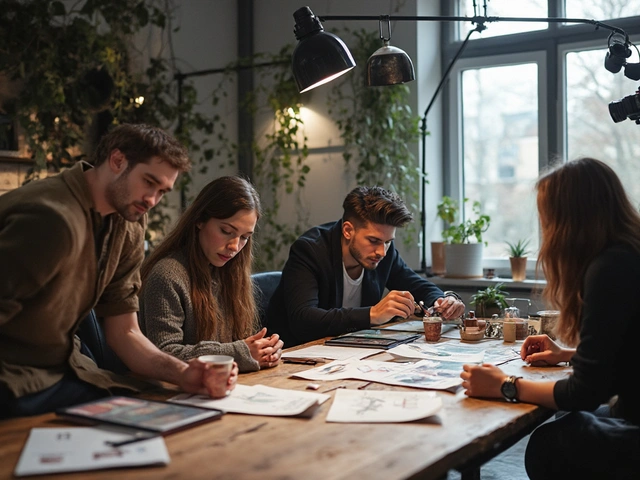
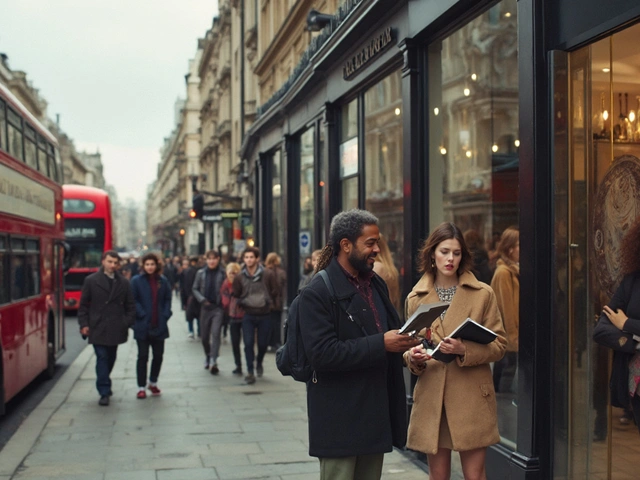

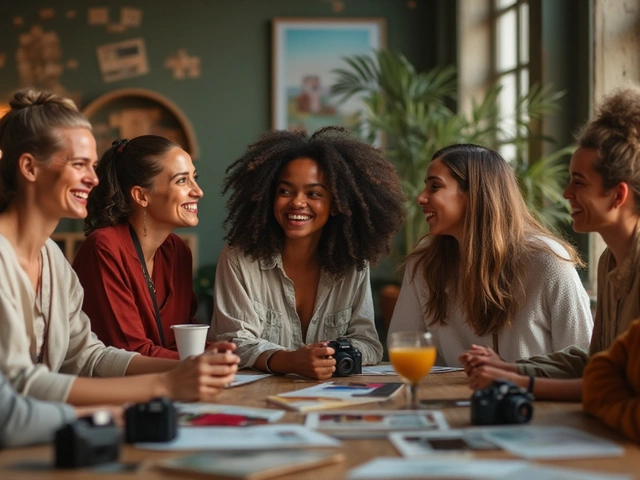
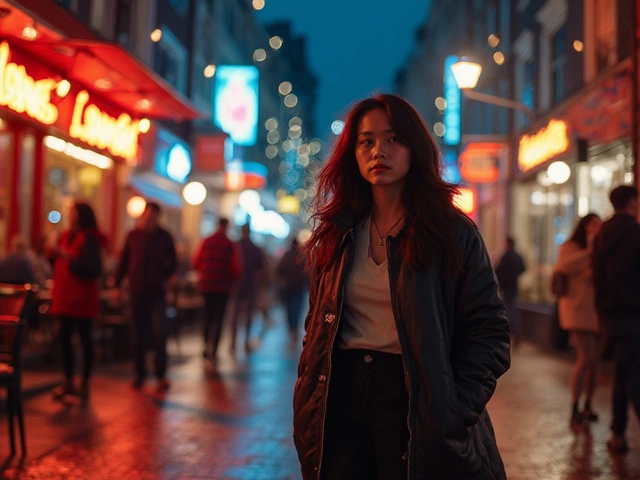

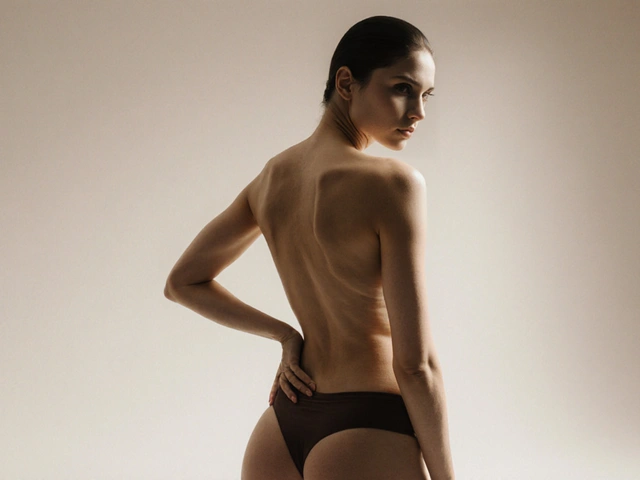

November 10, 2025 AT 00:20
julia costa
This post is way too long and says nothing new. Posing is just about looking good in photos and pretending you're not trying. I've seen this exact advice on five different blogs. Why are we still talking about this?
November 10, 2025 AT 09:13
Bryan Peele
The grammar here is amateurish. 'Collarbones pop'? 'Floating'? This reads like a BuzzFeed article written by someone who watched one runway show. Real art direction doesn't need this fluff. Just show the clothes and shut up.
November 11, 2025 AT 20:55
Paige Vejnar
OMG I LOVE THIS SO MUCH!!! 🥹✨ I literally cried reading the part about breathing and smiling with your eyes-that’s EXACTLY what my photographer told me last week and I didn’t get it until now!! Thank you thank you thank you!! I’ve been holding my breath and looking like a startled squirrel 😅💖 Can we please make this a daily meditation? I’m telling all my friends!!
November 12, 2025 AT 05:09
Vanness Latricia
Okay I just spent 45 minutes re-reading this and I’m crying again-not because it’s sad but because it’s so true. I used to think I had to be skinny or tall to be a good model but no-it’s about how you carry yourself, how you breathe, how you let your body speak without saying a word. I started doing the five-minute mirror thing this morning and I noticed my left shoulder rolls forward when I’m tired and that’s why my photos always look crooked. I’ve been doing this wrong for years. I’m gonna keep practicing. I’m gonna make my body into art. And honestly? I feel like I finally understand what it means to be seen-not just looked at. This changed something in me. Thank you.
November 13, 2025 AT 19:08
Debbie Nehikhuere
Weight distribution is everything. If your feet are flat, your whole pose collapses. I used to think it was about looking perfect-but it’s about feeling grounded. Once you find your center, everything else flows. Try it: stand on one foot, close your eyes, feel where your weight lands. That’s your anchor. Now open your eyes. That’s your power.
November 14, 2025 AT 20:30
Michael Soaries
Great breakdown. I’ve been practicing the angle thing-45-degree turn, head back to lens-and it’s wild how much more dimensional I look. Also the toe thing. Never thought about pointed toes making legs look longer. I tried it today and my jeans actually fit better in photos. Small changes. Big difference. Keep it up.
November 15, 2025 AT 03:26
Sean Fimio
Wait so you’re saying you don’t need to be flexible?? I’ve been doing yoga 6x a week for 3 years just to get my legs behind my head for a bikini shoot 😅 I’m so mad now. Also-did you mean ‘collarbones pop’ or ‘pop’ as in explode?? Because if so that’s a typo right??
November 16, 2025 AT 22:15
Dr. Atul James Singh
Empirical validation of somatic expression in visual semiotics is underrepresented in mainstream modeling discourse. The physiological biomechanics of weight displacement and kinetic chain alignment are not merely aesthetic considerations-they are neurokinetic feedback loops that modulate viewer perception. Your ‘grammar of posing’ framework is reductive. It ignores the role of proprioceptive calibration in dynamic equilibrium. I’ve published peer-reviewed papers on this. You’re missing the foundational architecture.